
Australia part five
Sunrise and sunset at Uluṟu-Kata Tjuṯa National Park.
I’m up and ready by 0500. It’s dark outside and the night is cool. I make my way to reception and stand outside, waiting to be picked up.
I’m the first to be collected and we drive around the complex, picking up people as we go. It’s a small group, and we fit into a van.
Our first stop is a sunrise viewing point. We pull into the parking lot and drive towards the far side, away from the large buses that stop near the entrance. The skies are purple, Uluṟu glows.

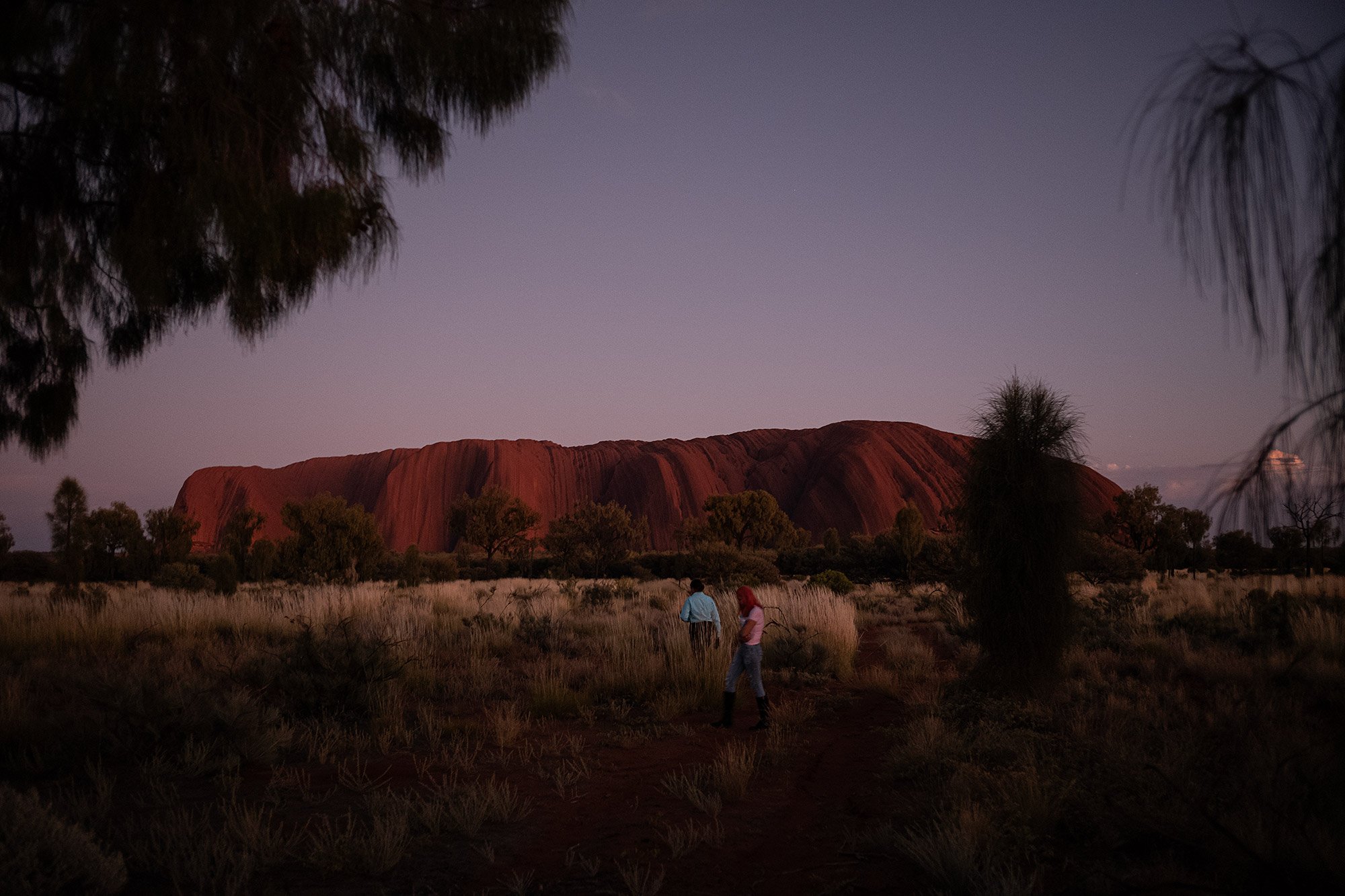

The skies change slowly as the sun begins the rise. The moon is a bright crescent, the smile of a Cheshire Cat hanging in the sky.
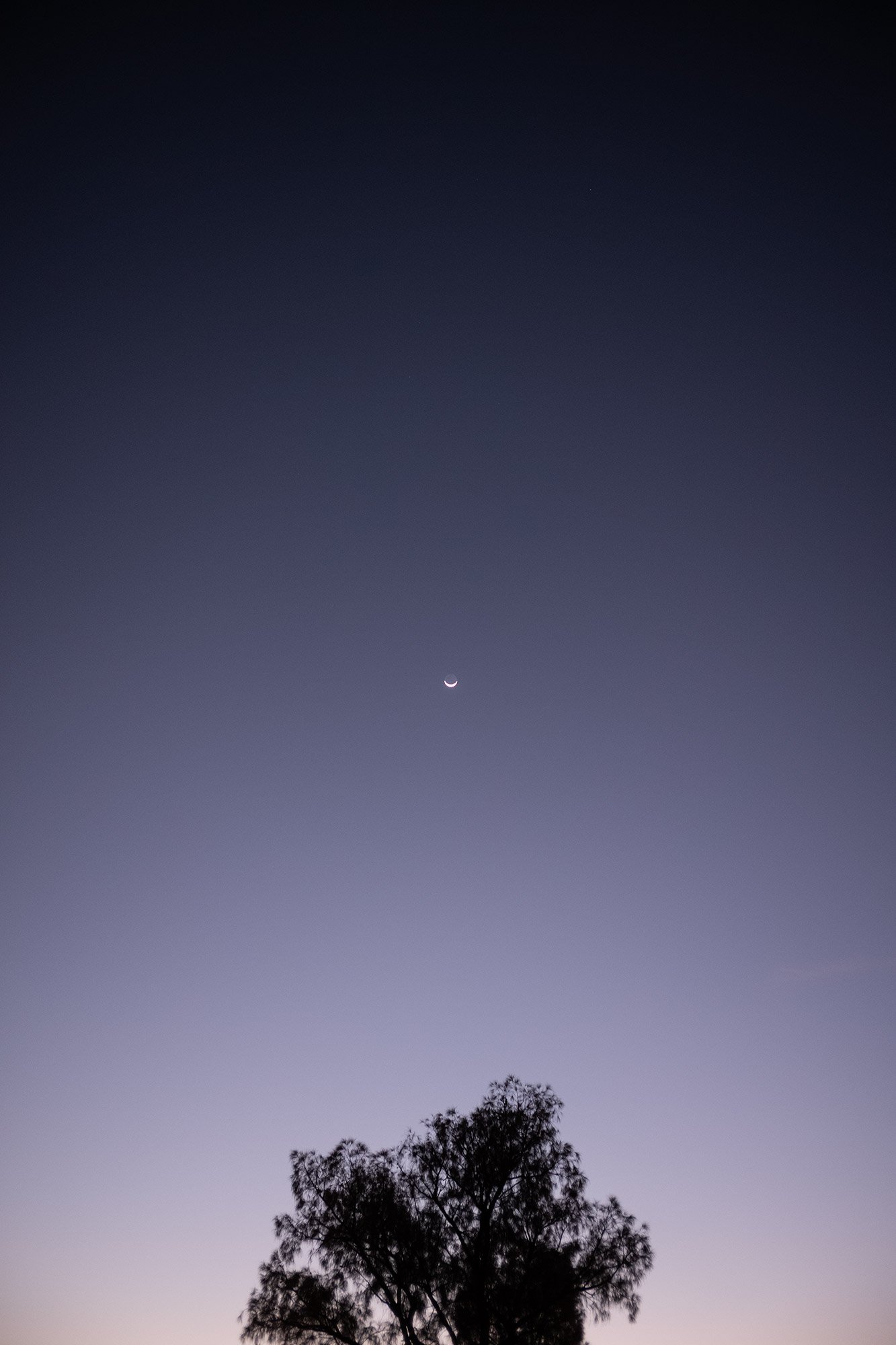

Our guide sets up breakfast and encourages us to eat. I take a muffin and then, one for the road after everyone else declines. I walk to the restrooms and discover an entire viewing area just off the parking lot, with paths that lead up to a small hill and viewing platform. There’s enough time for me to explore and so I do a loop before heading back to our group.



It’s a short drive to the parking lot where we’re to pick up our Segways. An obstacle course has been set up to help us practice. The guide asks if anyone is particularly nervous about learning how to ride one and I raise my hand.
We’re given helmets and pads and taught how to get on and stand on the device and, as importantly, how to get off. I’m lead to one and shown again how to get on and how to lean forward and back to make it move. I make my way cautiously through the course and then left to my own devices as the guide goes to outfit the next rider.
After a few turns around the course I begin to get the hang of it. By the end of the tour I’ll wish that the top speed were a bit higher.
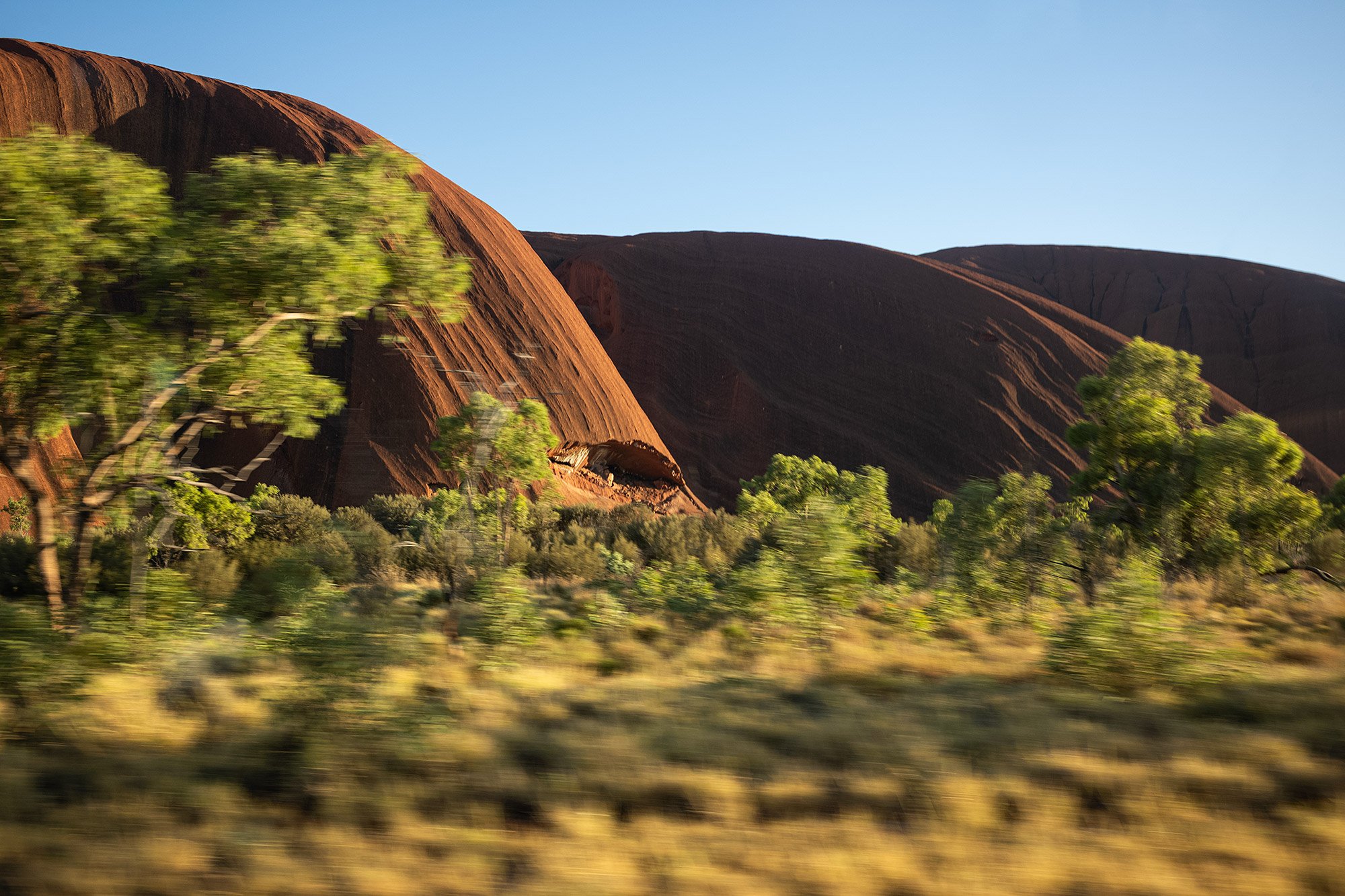
We’re assigned an order and told to line up. I’m bringing up the rear. Our guide mounts his Segway and leads us down the path. Our first stop is the Muṯitjulu Waterhole. We line up and park our Segways in a small lot before before following our guide on a short walk to the waterhole.
Along the way he stops to tell us about the battle between Kuniya the woman python and Liru the venomous snake. The area is embued with cultural significance and stories. Our giude tells us that it’s an oral tradition and the stories should only be told on site. He tells us that only a few stories have been shared, and that some stories can never be told to outsiders.




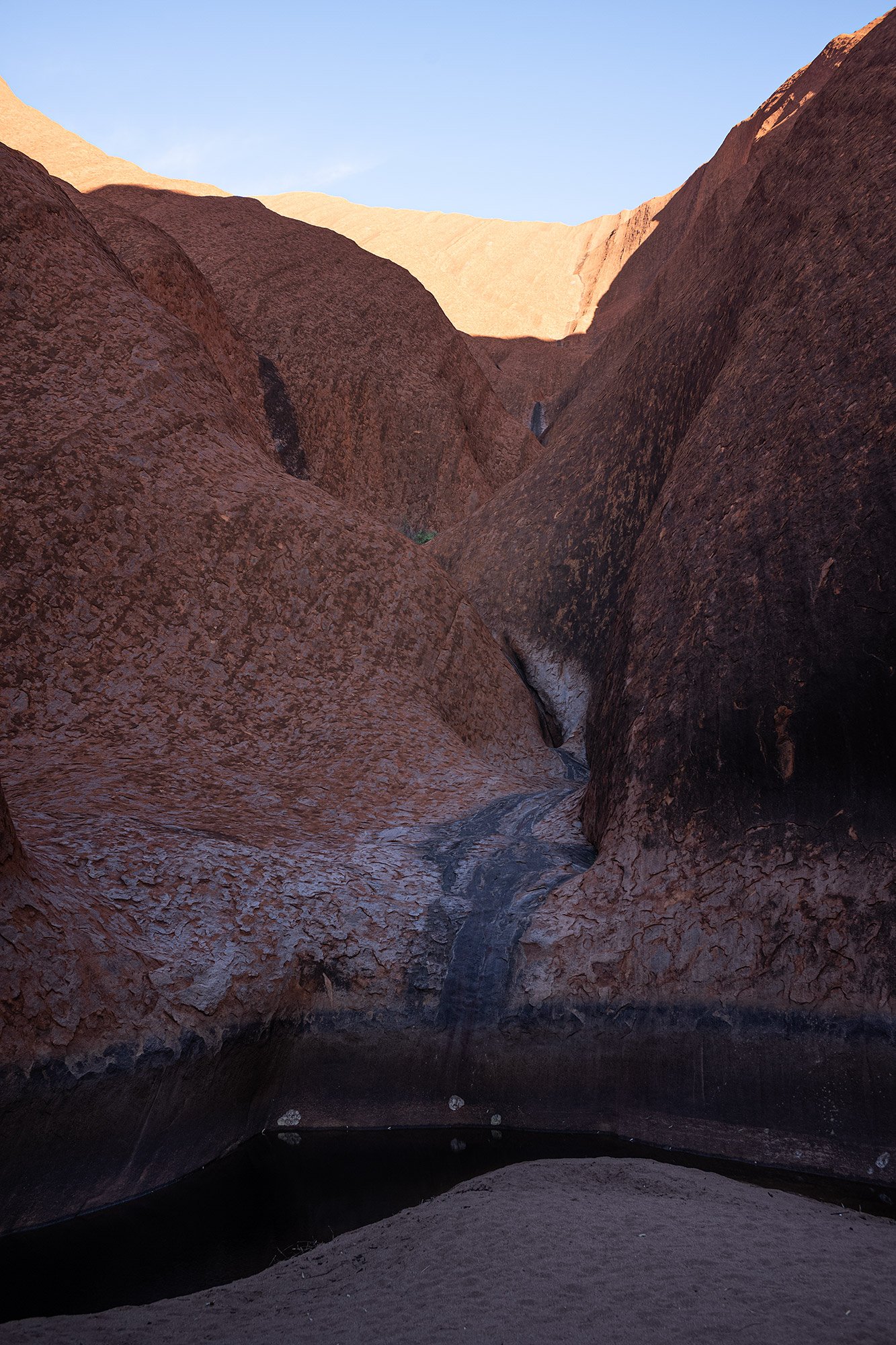
We continued on towards Kuniya Piti, pausing here and there to listen to more stories and admire the colors of the rock. The sun rose and the day grew hotter. Now and again we’d pass people hiking the route in a clockwise direction. At one site we alight and the guide points out some rock art carved into the entrance of a small cave.
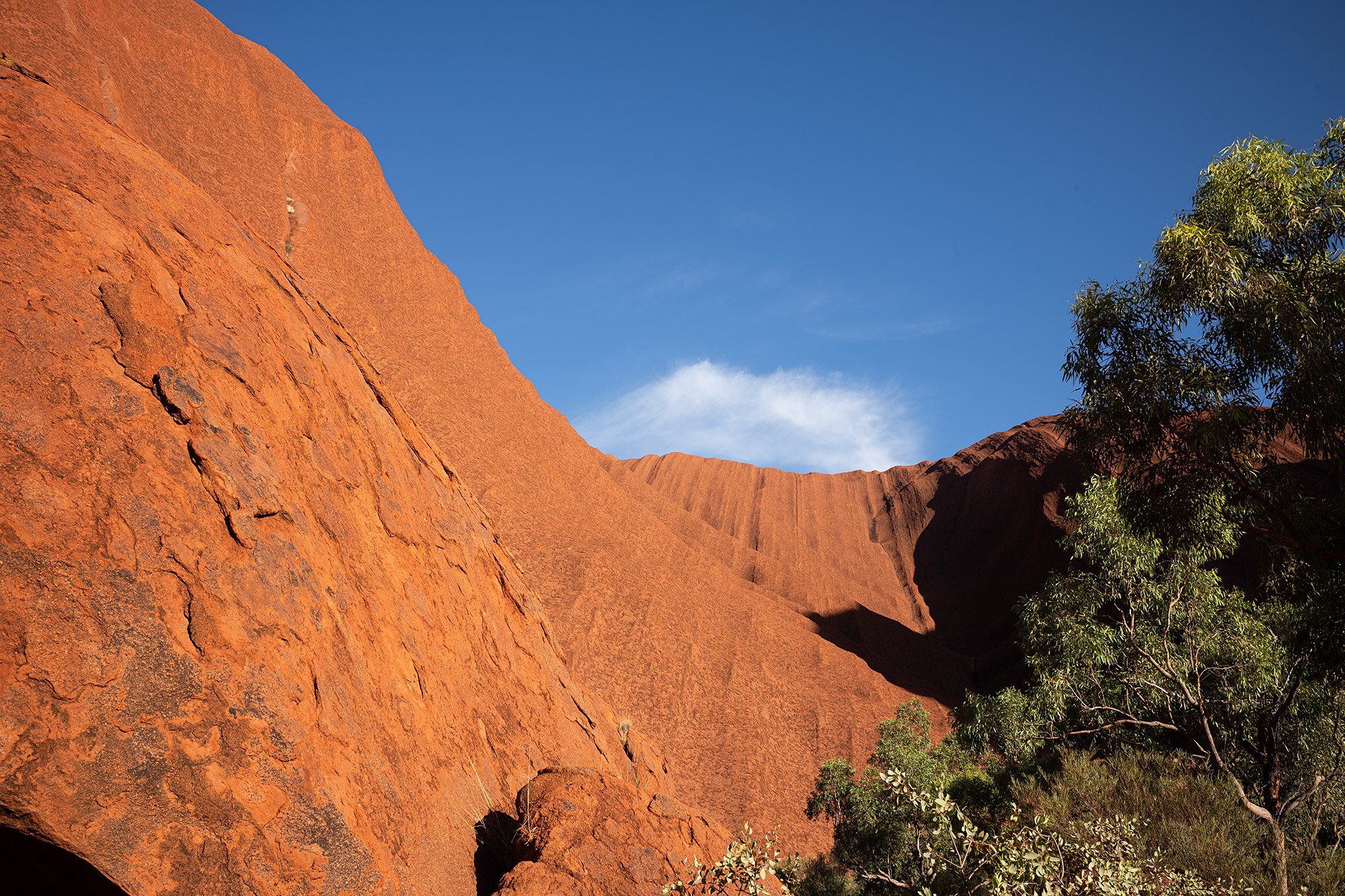



Our guide talks about the invasive species and plants that have been introduced to Australia. He tells us that oe of the scariest animals are the horses that have been introduced. He also tells us that the grass that grows everywhere is an invasive species, that once this semi-arid area looked completely different.



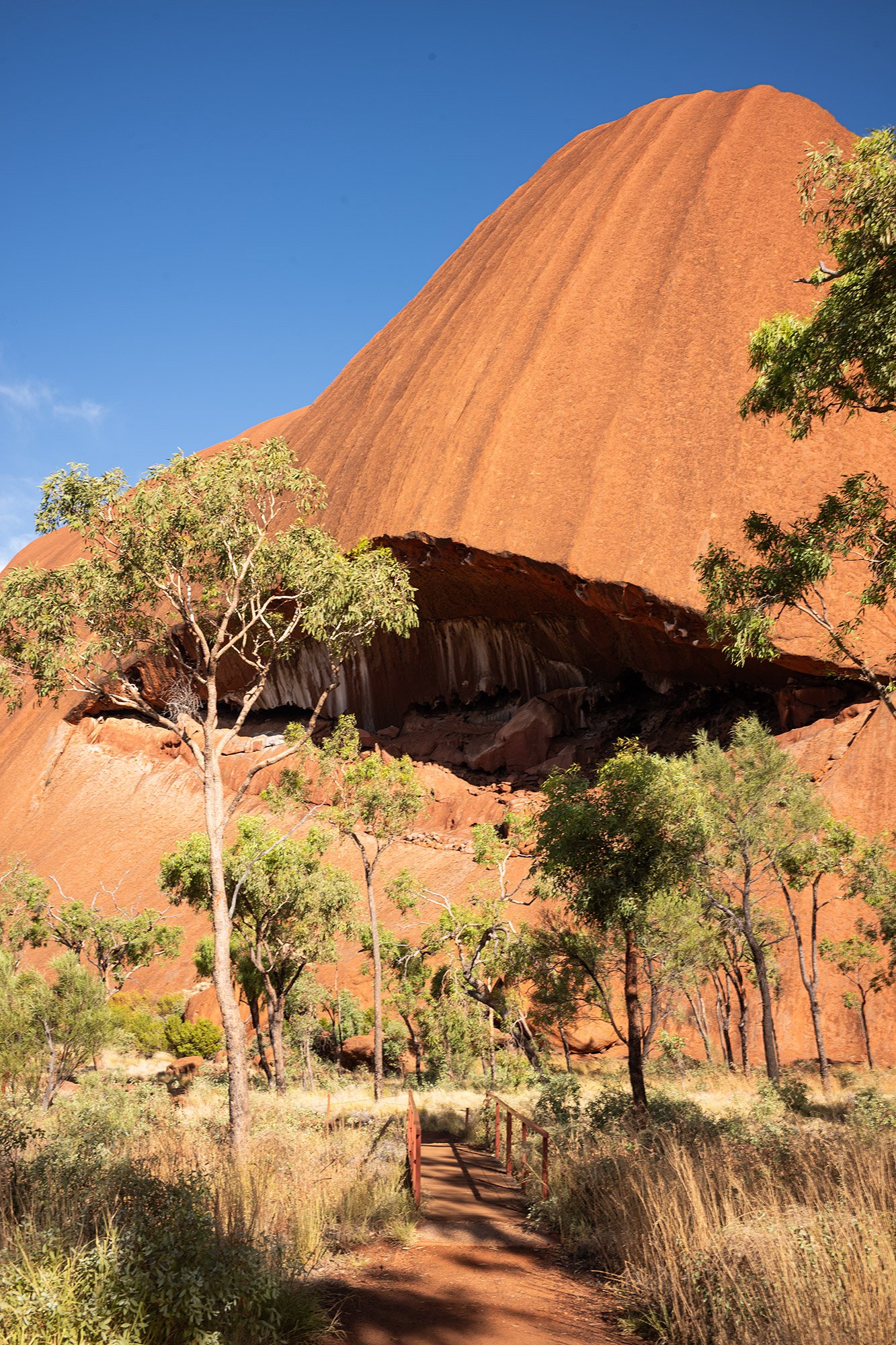
At one point we stop and the guide has us pose for pictures. I look like a complete dork. But I had been concerned about hiking around the base of Uluṟu in the heat with no shade. And it’s been admittedly fun to learn how to ride a Segway. Bringing up the rear, I’ve held back and lingered now and again to take photos, speeding up to rejoin the group when they stop.


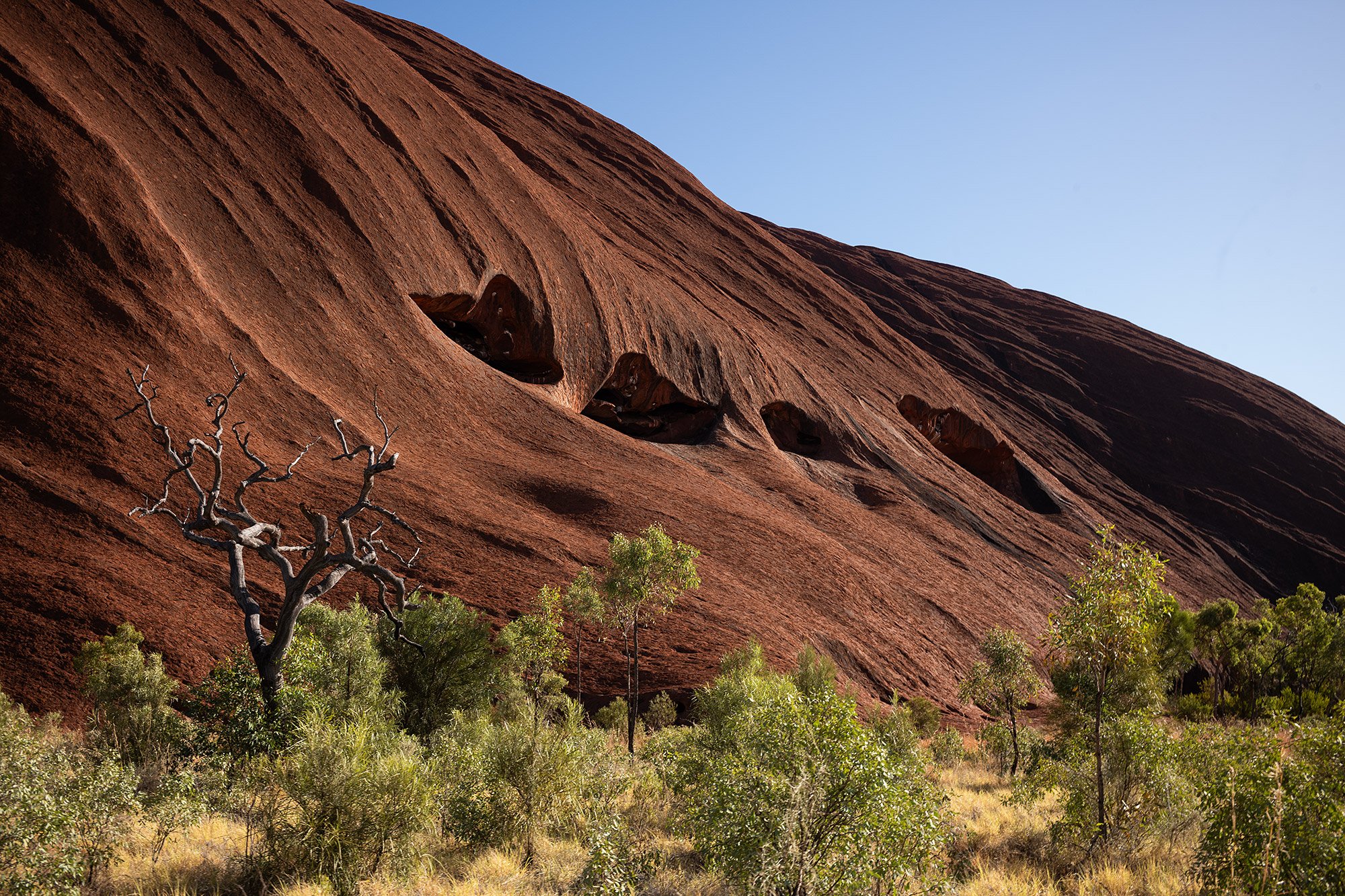
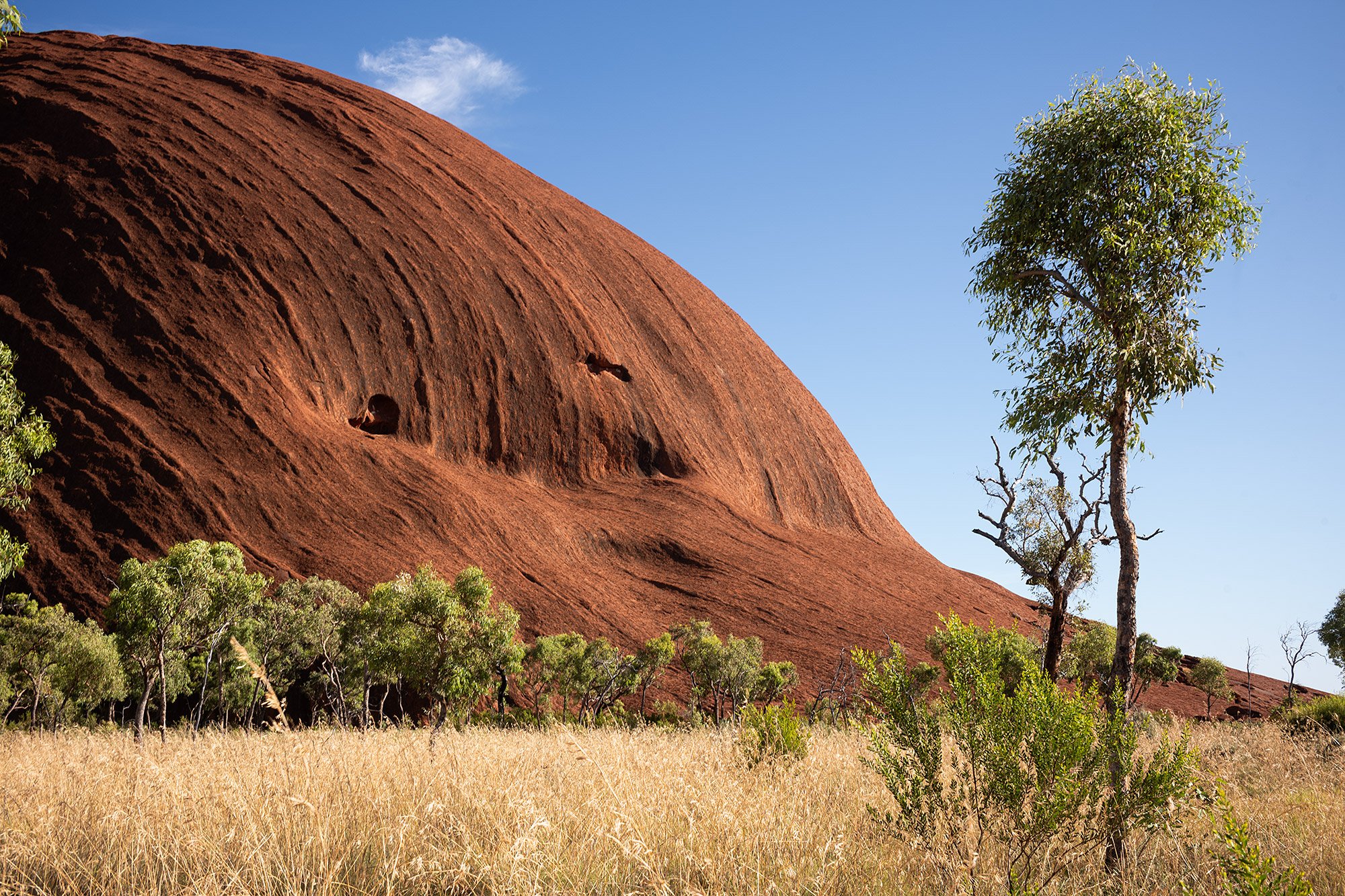
As we approach the back of Uluṟu our guide tells us not to take photographs. It’s particularly sacred ground, and we cruise along in single file to the opposite side when we’re once again free to take all the pictures we want.
We stop at a car park which used to be the jumping-off point for people to climb Uluṟu. As sacred ground to Aṉangu, they were never happy with the practice. In 1985 the Uluṟu-Kata Tjuṯa National Park was handed back to the Traditional Owners and on 26 October 2019 the Uluṟu climb was permanently closed.


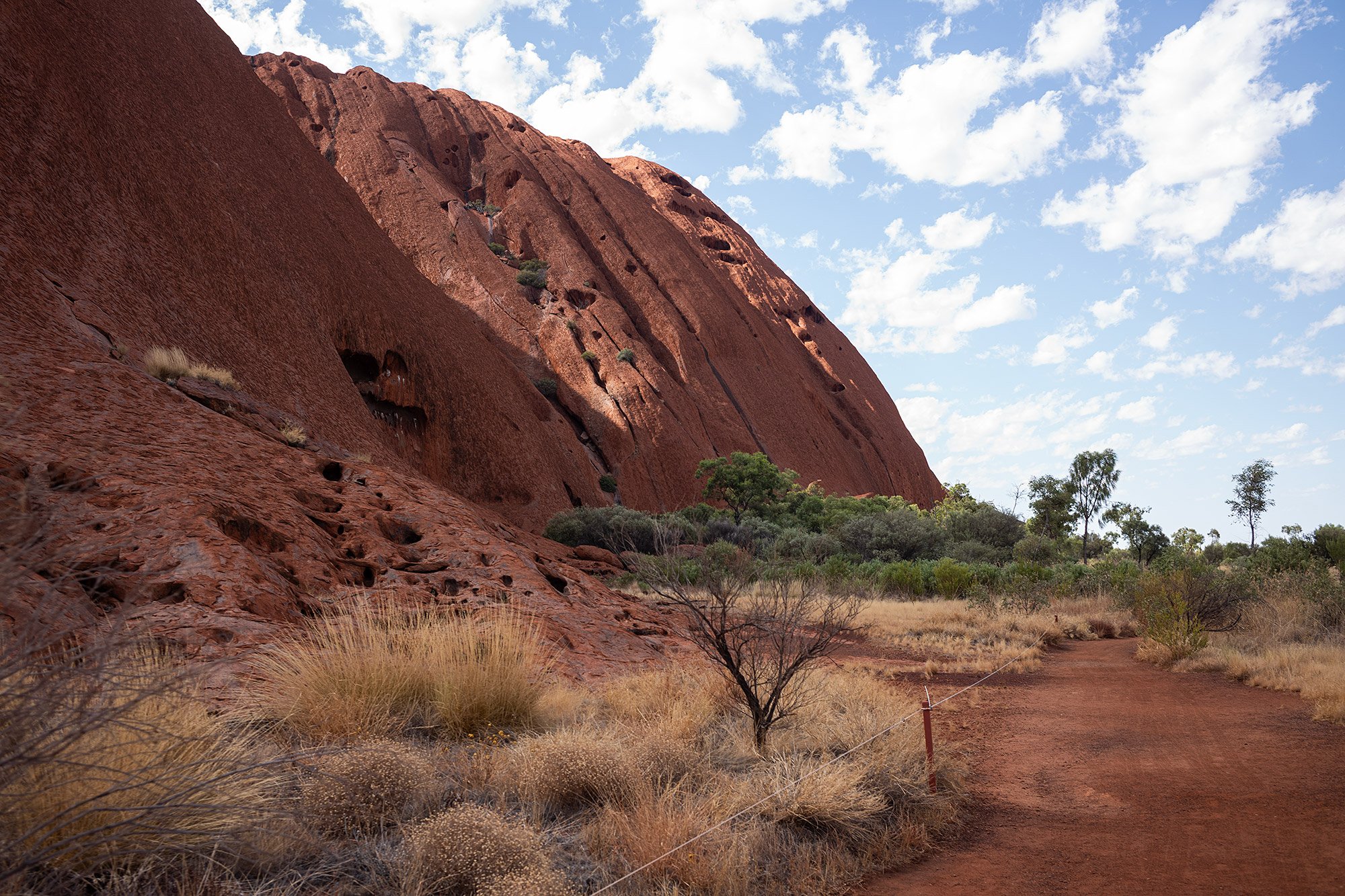


Back at the parking lot we dismount and shed our protective clothing. If we have nothing else planned, our guide suggests the sunset trip to Kata Tjuṯa. He tells me that they run buses in the late afternoons; it shouldn’t be too difficult to book. I thank him for the advice and make it a point to ask at reception when I’m back at the resort.


At reception I ask about the buses that take guests around the park and how to get to Kata Tjuṯa for the sunset. It turns out that it’s a separate ticket for Kata Tjuṯa; it’s not the hop-on hop-off bus that goes to different points around Uluṟu. For some reason it takes me a second for this to click.
I ask if there’s space on the Kata Tjuṯa sunset bus. The receptionist checks and tells me there is.
•
On the way we stop at the Kata Tjuṯa Dune Walk. A trail leads up the hill to a platform offering us panoramic views of Kata Tjuṯa.
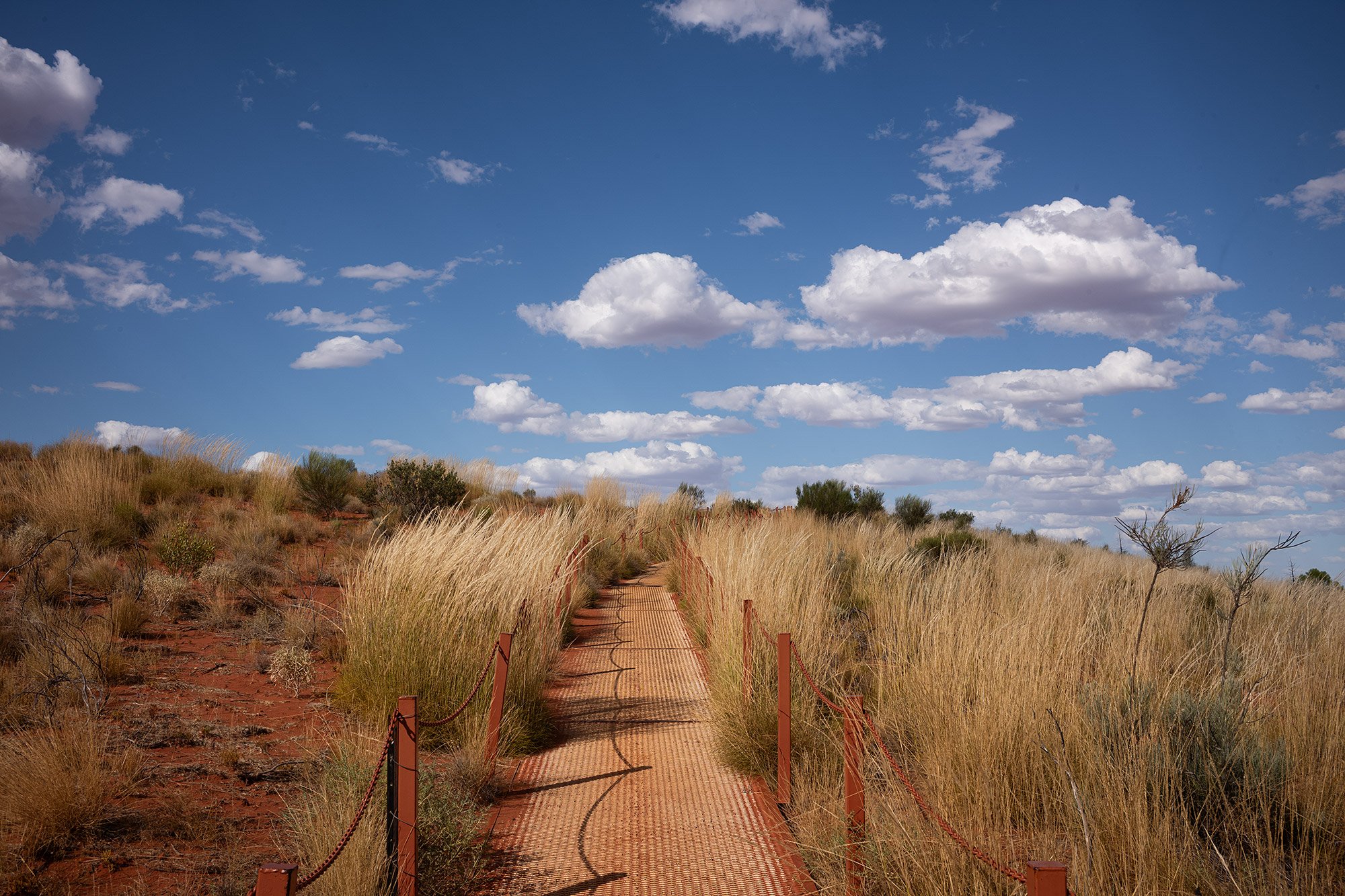
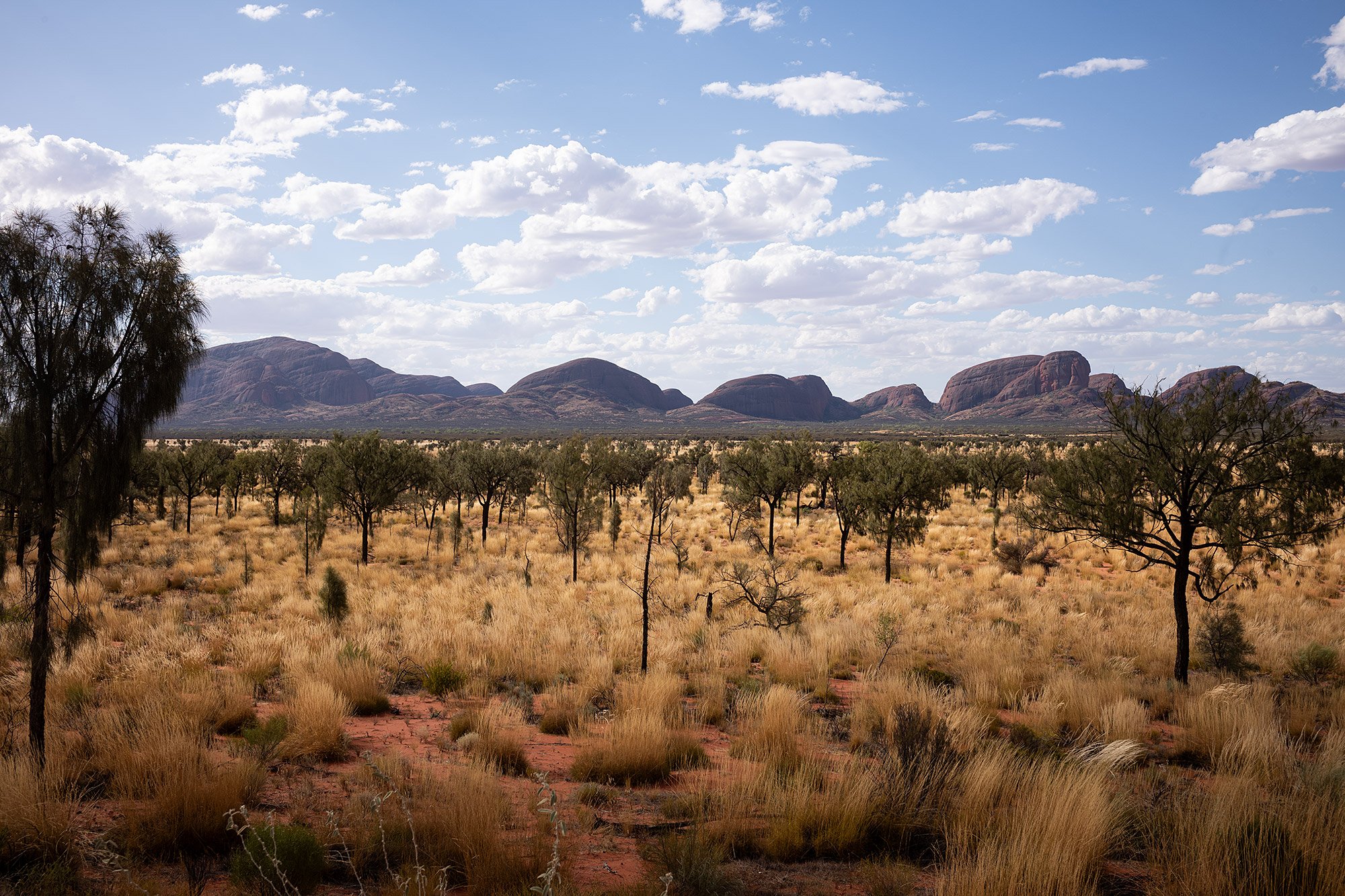
It’s a stunningly beautiful day and I feel lucky to see clouds dotting the pure blue skies. It’s also hot, however, especially with the sun beating down on us on the platform.
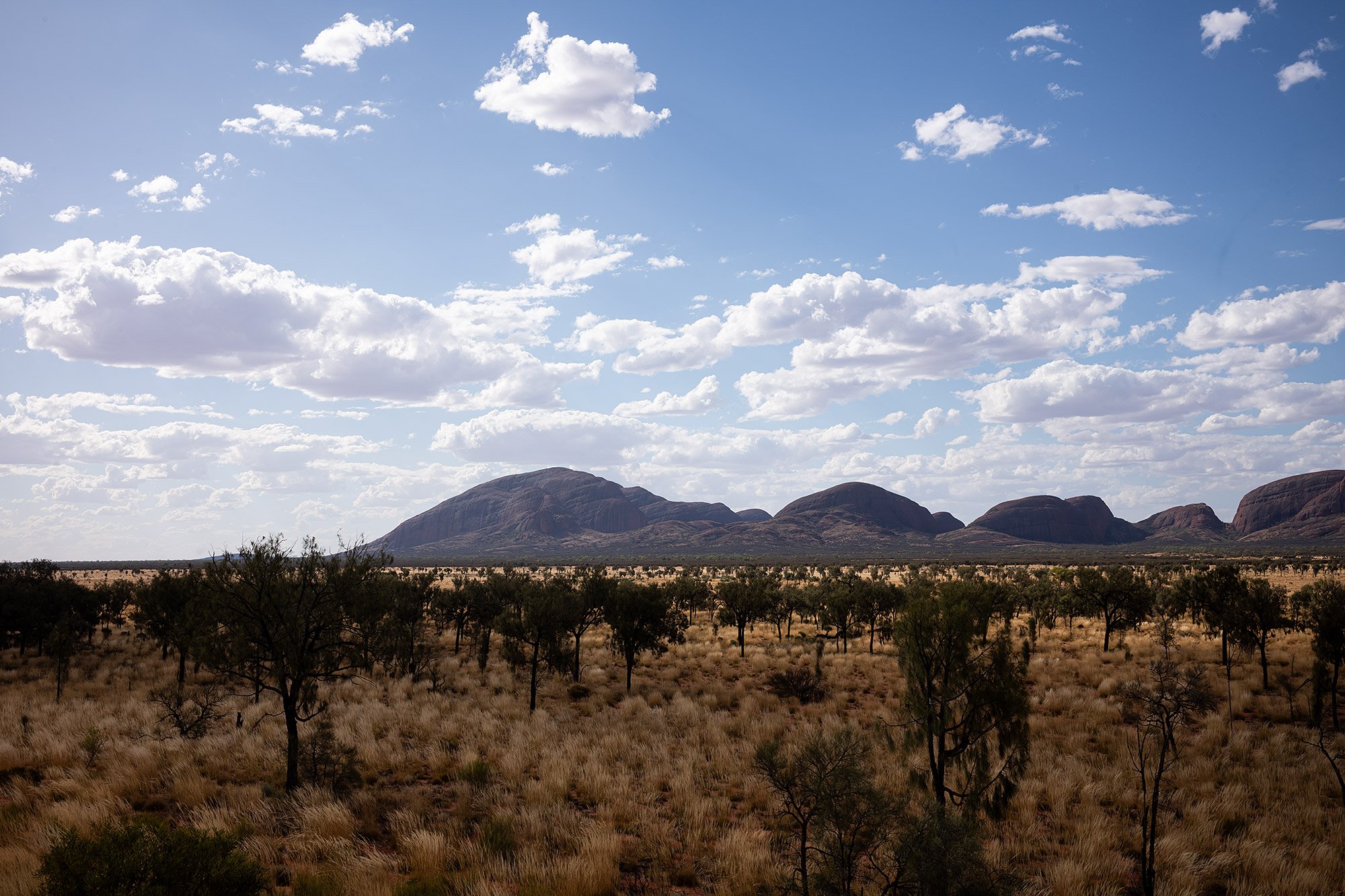


In the distance we can see Uluṟu, slightly hazy on the horizon. The clouds seem to be trying to mimic its form in the sky.
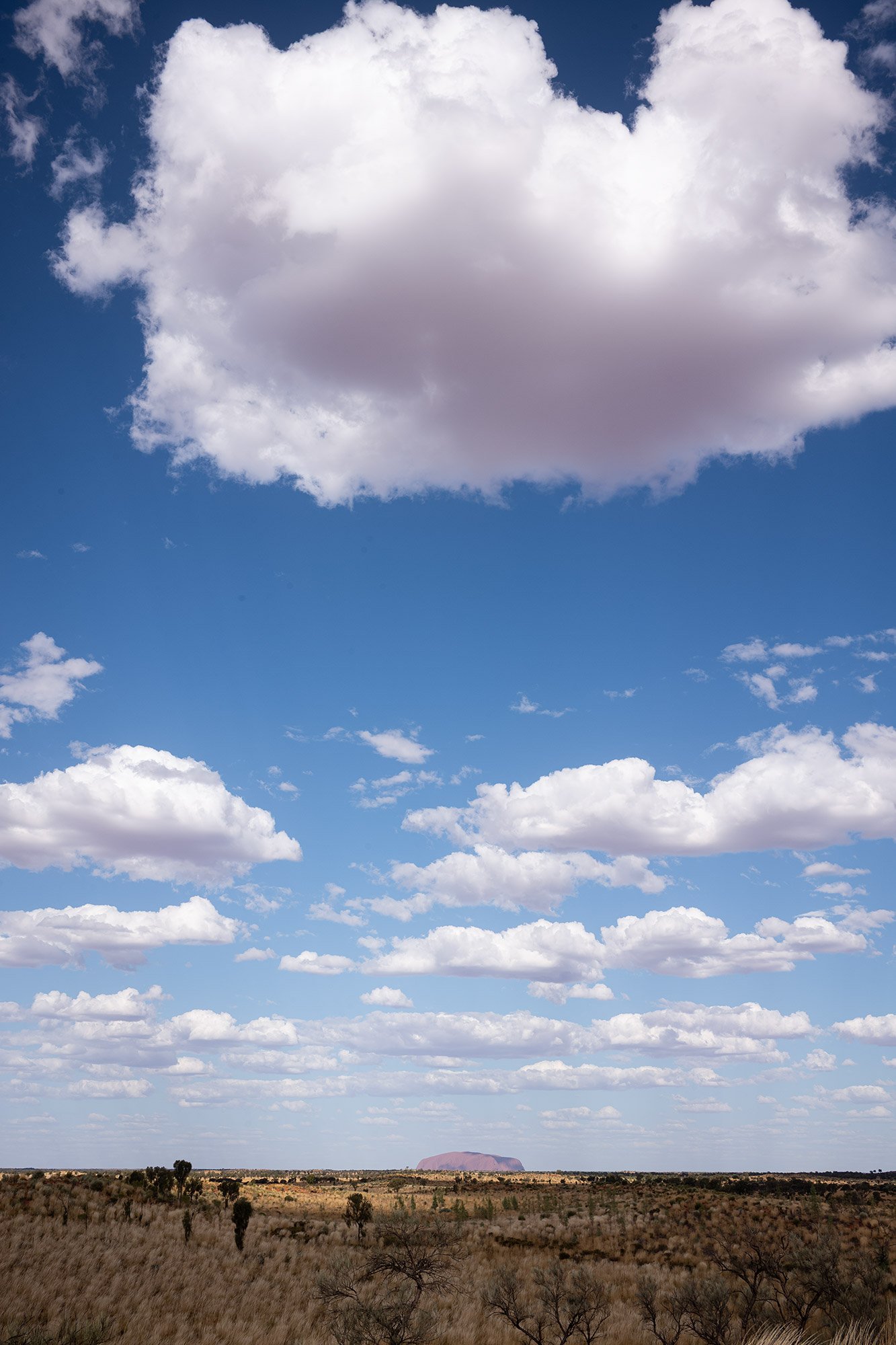
On the other side we can just make out Atila, the third rock in Uluṟu-Kata Tjuṯa National Park. Its just missed out on making it to the name.

There’s only seven of us on this trip. A Frenchman, a woman from Brazil, two blokes from the UK and a couple who had been on my flight from Sydney. The woman from Brazil has run away to join the circus. She tells me that she’s in clown school, learning the ropes, and traveling with the circus. I think it’s awesome.


We drive towards Kata Tjuṯa to do the Waḻpa Gorge walk. Before we set off our guide makes sure we have water with us. It’s a completely exposed walk into and out of the gorge and she tells us we can take our time.


The light changes as clouds drift across the sun, dramatically shifting the colors of the rock. As I walk towards the gorge I make sure to stop and look at how the light and shade play across the face of the rock.
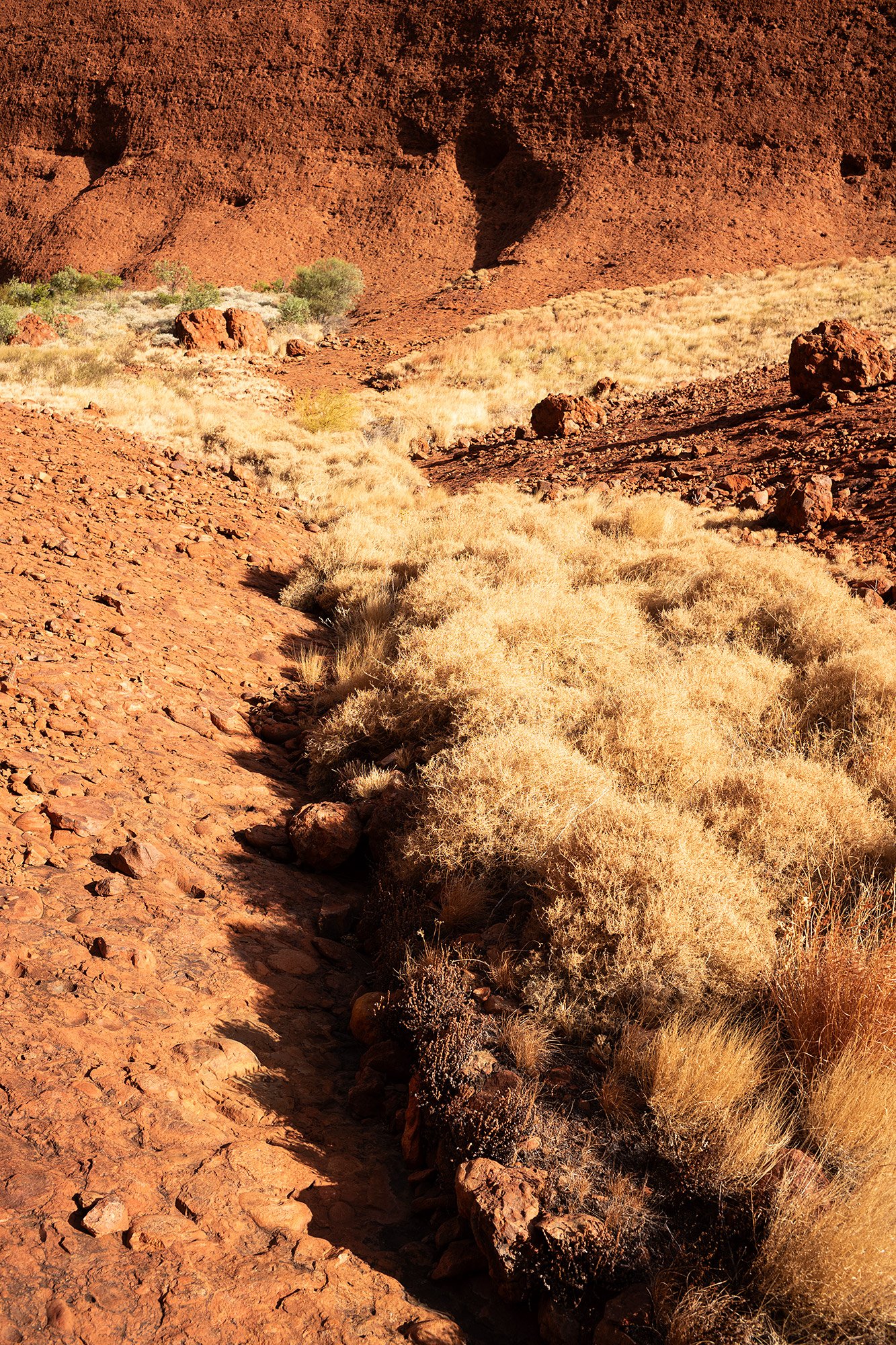
I’m the first to arrive at the end. I climb to a viewing platform with benches set up for weary hikers. It’s hot sitting upon them. I take out my water bottle and half-empty it as I look to and through the gorge at the sky beyond.

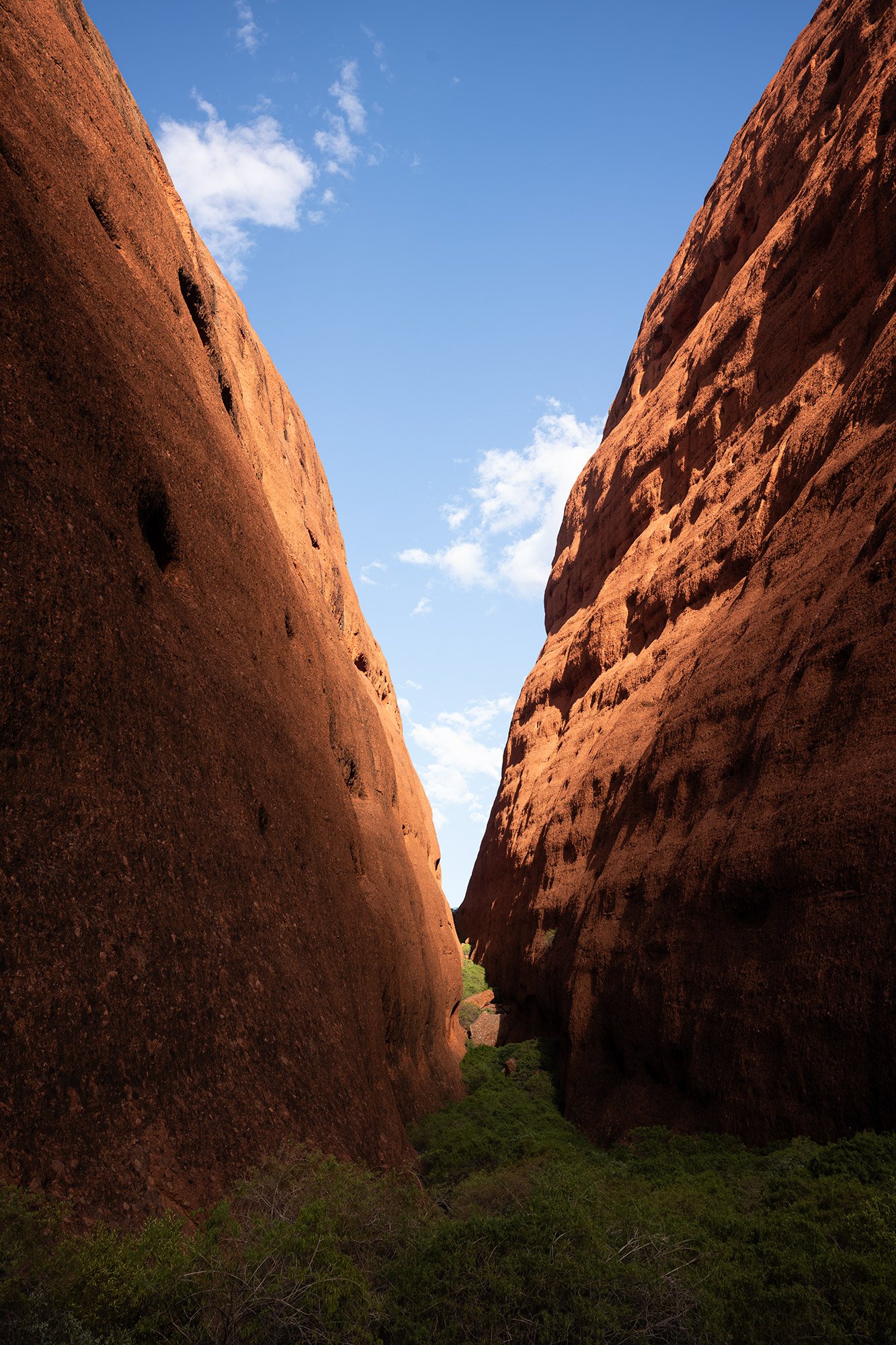
A plaque tells of the wildlife that can be seen in the area, but I don’t see any. It’s probably the wrong time of day. There’s no need for anyone to be out under the sun.

On the walk back I fall into conversation with the blokes from the UK. They’re trying to figure out their visa, planning to live and work in Australia for a year. They tell me about the process and the work that you need to do in order to get it, after which they plan on buying a car and driving around the country.



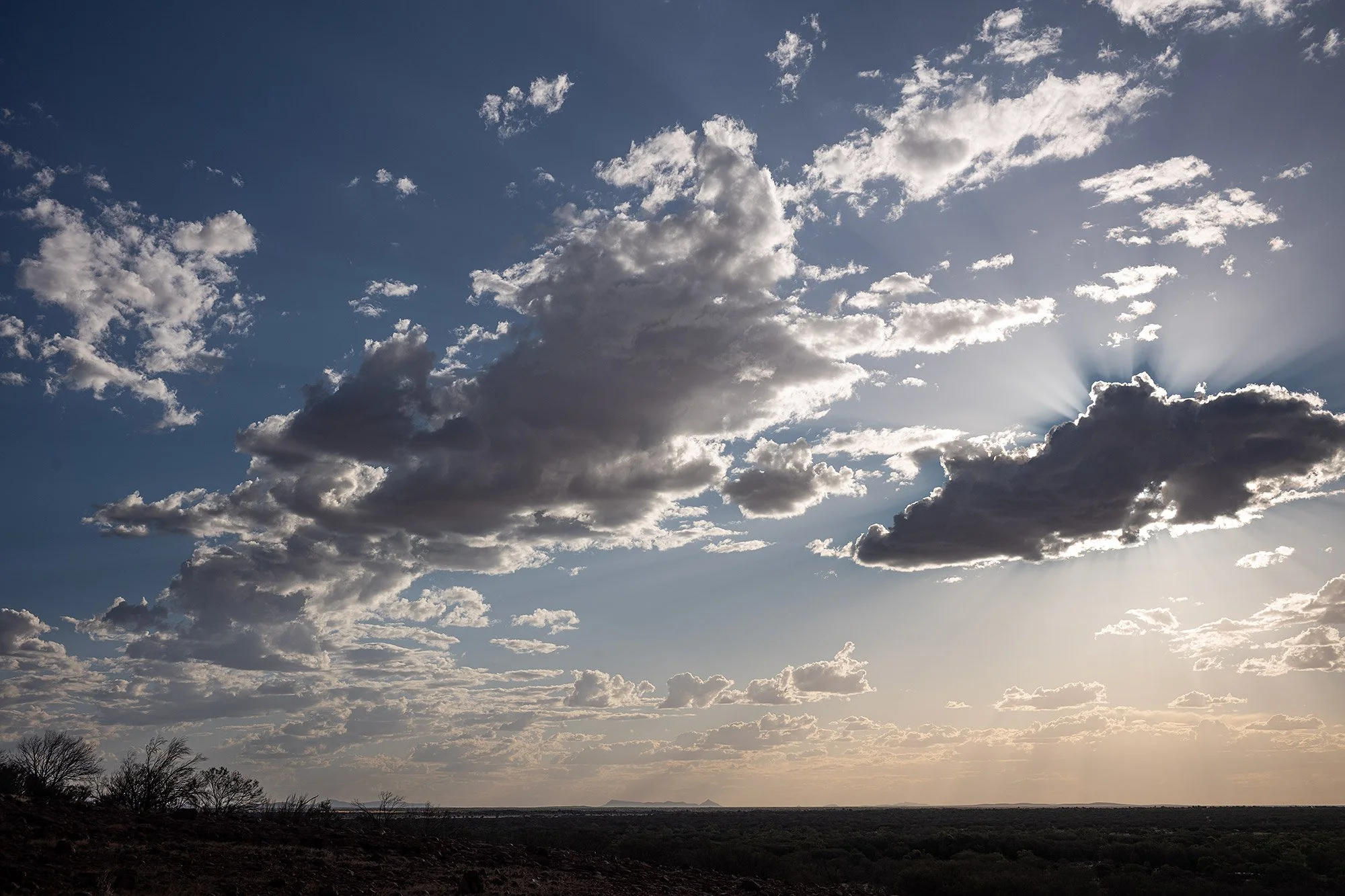
The Frenchman and Brazilian are the last to return to the bus and our guide sets off to find them and bring them back so that we can head to the sunset viewing point.

When we arrive our guide suggests that we walk to the end of the path as there’s usually fewer people who bother to walk that far. The light is already golden and dramatic shadows play across Kata Tjuṯa as our shadows lengthen and reach towards it.

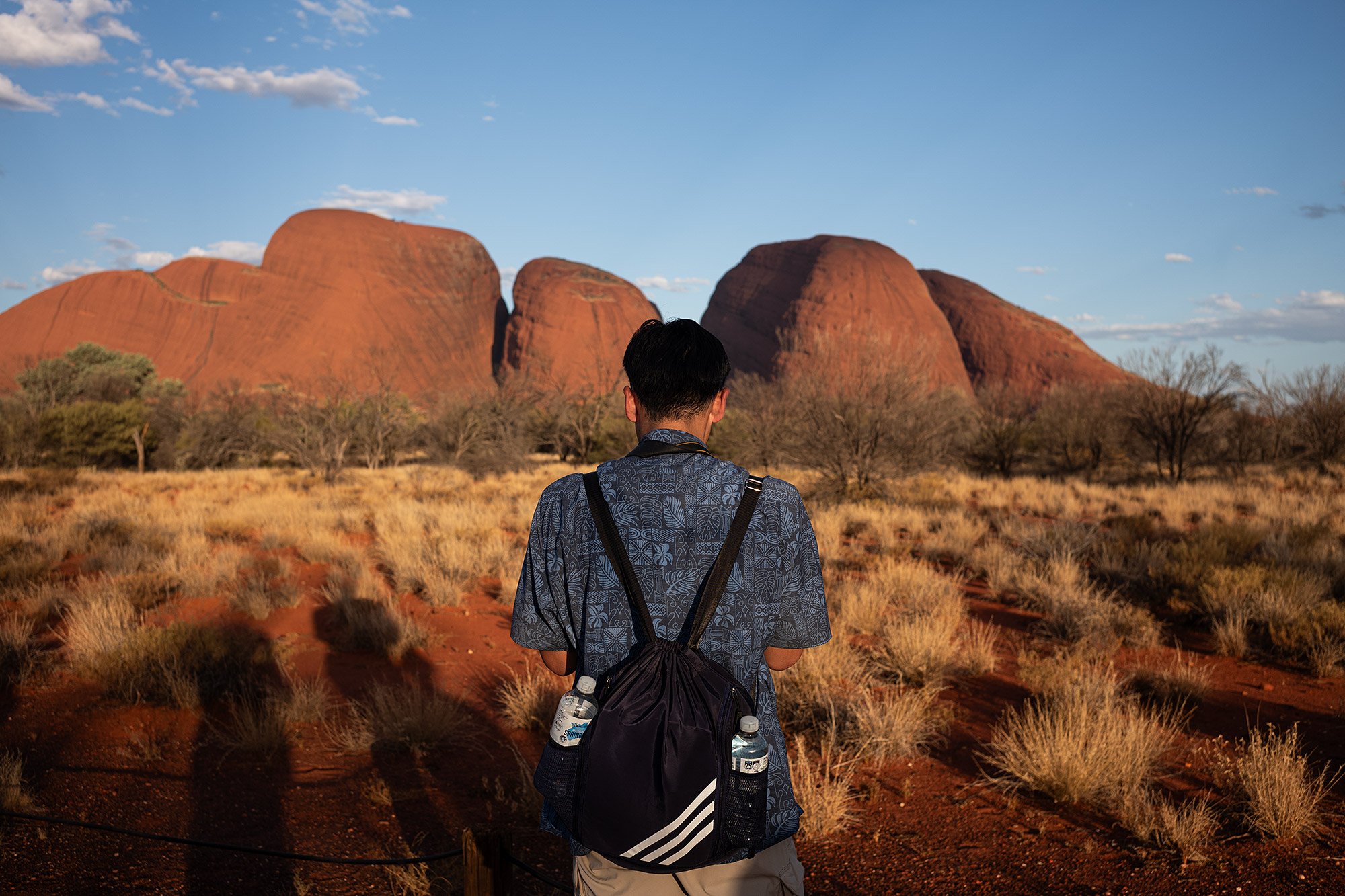

The two blokes from the UK chat with our guide, backs turned to Kata Tjuṯa, facing the sun. I find it funny, but they have excellent views of the sun itself as it disappears under weestern Australia.

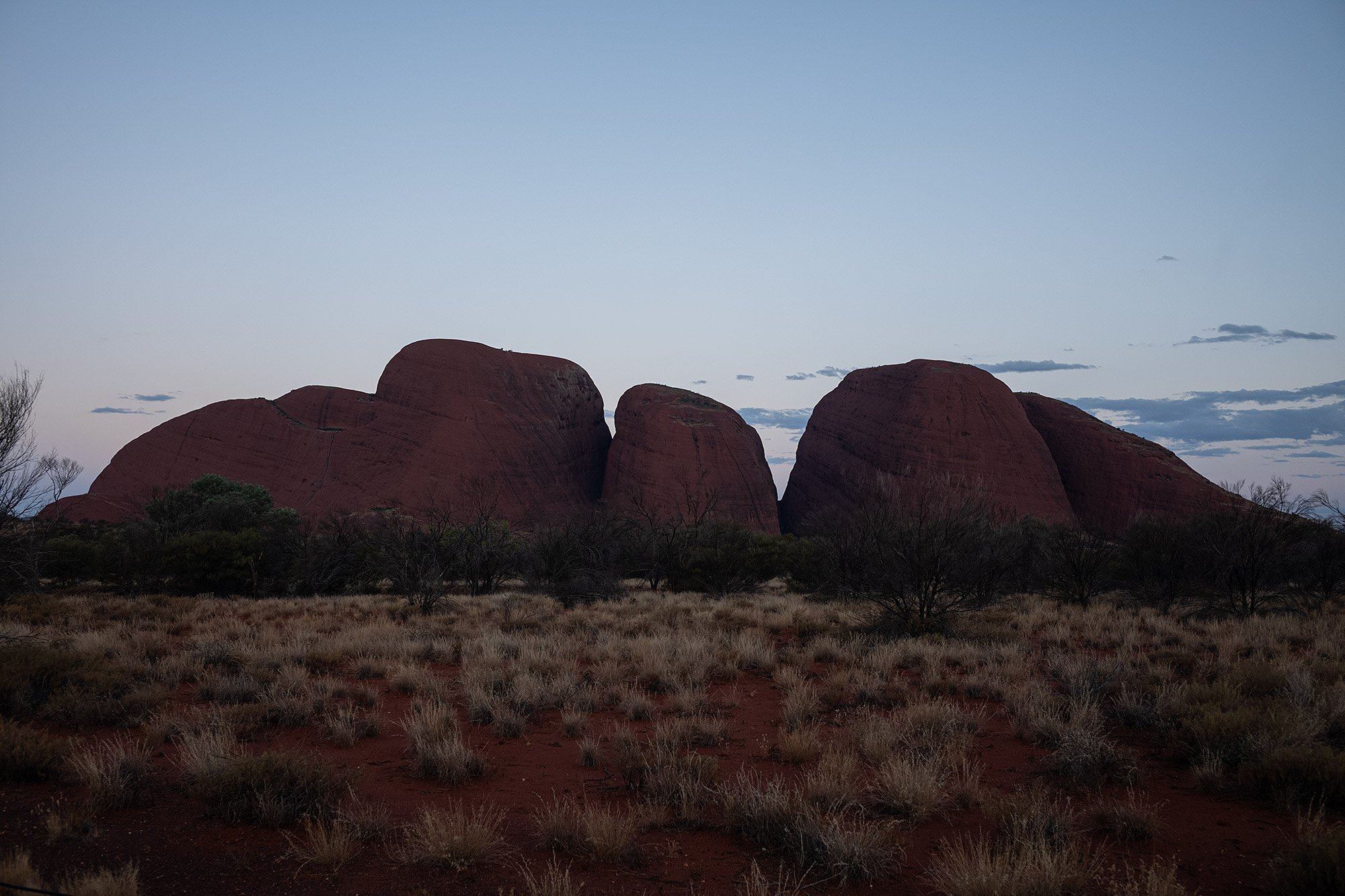


It’s been an incredible day. The beauty of Uluṟu brought out at sunrise, a red heart seeming to pulse with life as the midmorning sun brought out its most vibrant hues; the majesty of Kata Tjuṯa stretching across the horizon as clouds cast shadows upon its many crowns.
When planning my trip to Australia I had originally decided to skip visiting Uluṟu and Kata Tjuṯa in the interest of time and time zones. I can’t believe that had been my original thinking. Visiting the park and being in the presence of these monoliths has been the highlight of my time here, and this day a highlight of my year. 🇦🇺
25 February 2025

